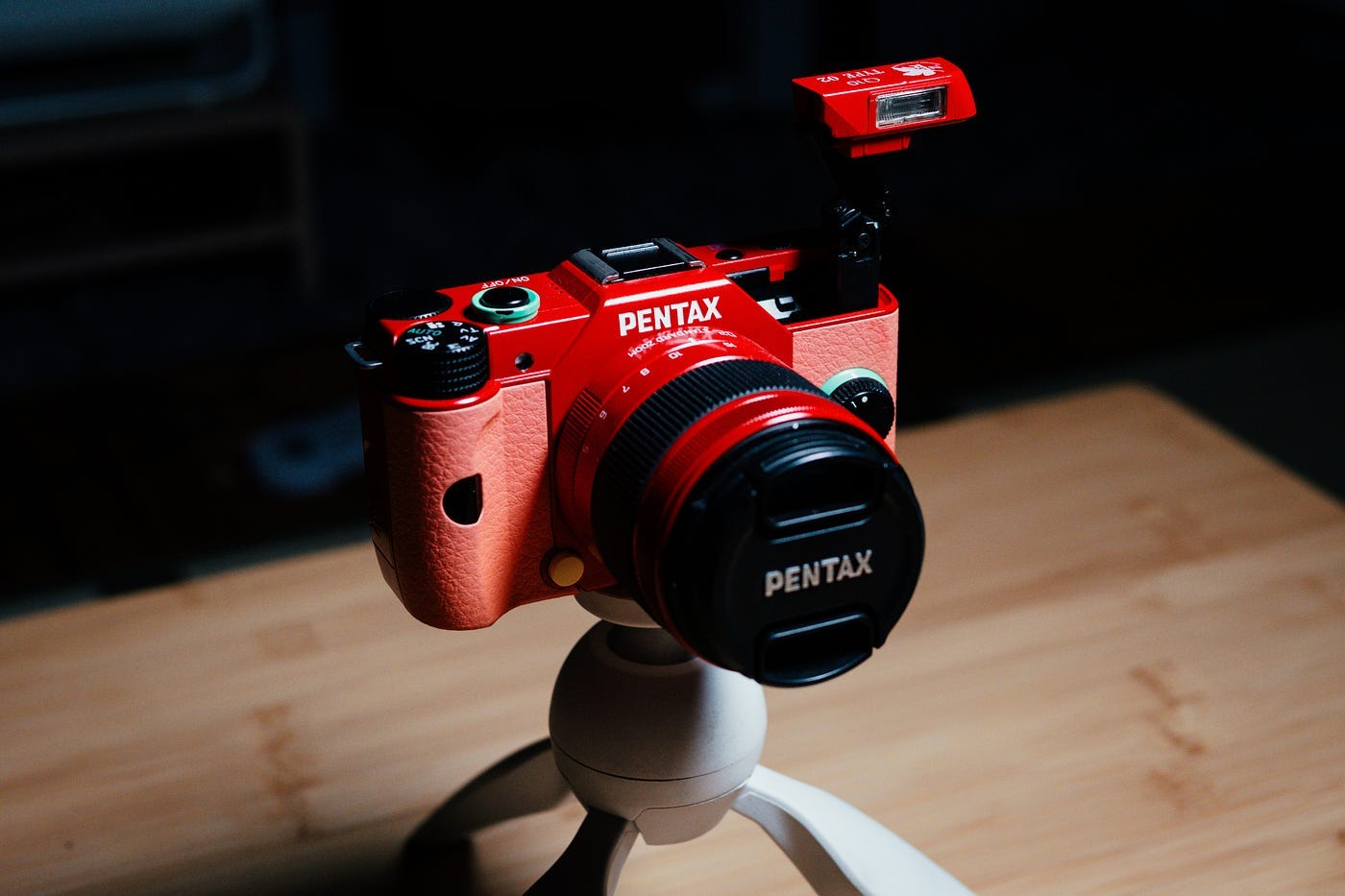The Feisty German of Tiny Japanese Cameras
Come for the Evangelion drip, stay for the unique optics of this forgotten little camera system
Modeled after “Best Girl” Asuka’s iconic mech, Pentax released the colorful, diminutive Q10 in 2013 as a tie-in to the Rebuild of Evangelion films. Weighing just 200g, Pentax’s Q system maintains the distinction of being the world’s smallest interchangeable-lens camera.
However, even by the standards of the day, its 1/2.3" sensor was tiny—limiting the bokeh and ISO performance relative to the similarly priced competition. What utility, then, could this camera have in 2025 beyond collecting dust on an otaku’s shelf? Is there a future for this fiery Pentax beyond Gen Z’s nostalgia for old tech?
A Sneaky Concert Shooter: the Pentax 06 Telephoto Zoom features the range of a 70–200mm full frame equivalent lens, and measures only two inches! Most lenses with that sort of reach will never make it past security. Who would suspect your toyish Evangelion collectible is capable of snagging close-ups of the band? The best smartphones of today can’t compare.
The Q10 hides a complementary surprise: it features one of the first in-body stabilization systems. This enables slower shutter speeds to be used with the telephoto, sidestepping the high ISO deficiencies of the camera. So long as the band isn’t hopping around like Mick Jagger, sharp results are possible even in dim scenarios.
To the Moon: another quirk of the design is the short flange distance between the lens and sensor. This comes into play in astrophotography, as the camera can be mated to a telescope without vignetting.
It gets better—the huge crop factor increases your reach, allowing for moon shots that nearly fill the frame. Even modest scopes become capable of close-ups with significant detail. The math is boring, but the resolving power of this combination exceeds modern solutions which cost thousands more.
A Night Out with Friends: should I bring my camera to the bar? Am I risking sticky buttons, scratched lenses, or worse? Photographers are familiar with the quandary—who wants to worry about their expensive gear? Thankfully, Q series cameras are affordable!
You’ll pay a premium for fancy robot models, but standard Q cameras can be had for well under $200. Grab the fast 01 Standard Prime, pop up the adorable flash, and you’ve got a capable, low-stress memory machine.
Bonus: the still-cheap Q7 model features an updated sensor with slightly better IQ in low-light situations. No longer does a spilled Negroni ruin an evening!
Street Photography: telephoto lenses are pariahs of street work, often unable to capture candid moments due to their noticeable and intimidating size. Once again, the Q’s Telephoto Zoom offers an alternative—providing reach in a subtle and playful package.
Buck conventional wisdom and achieve a tight perspective while avoiding ruffling feathers. Deep depth-of-field contributes to quick handling, despite the outdated autofocus and cramped controls.
In the age of planned obsolescence and disposable tech, it’s gratifying to stumble upon use cases for the tools of yesterday. Pentax created something unique with the Q series and it remains a showcase of the lesser-known benefits of small sensors. In short—wunderbar.






